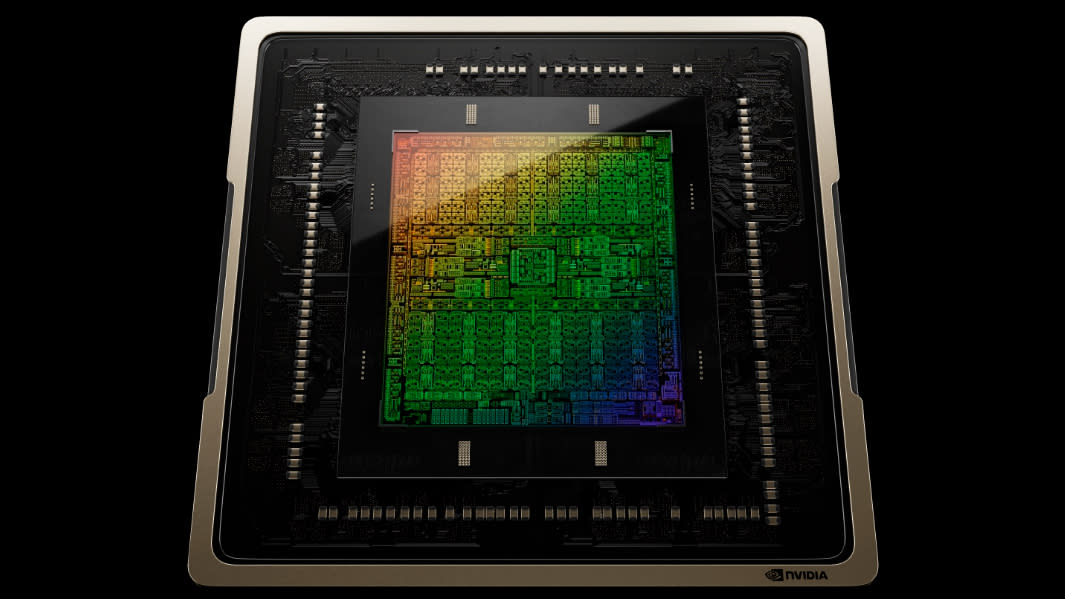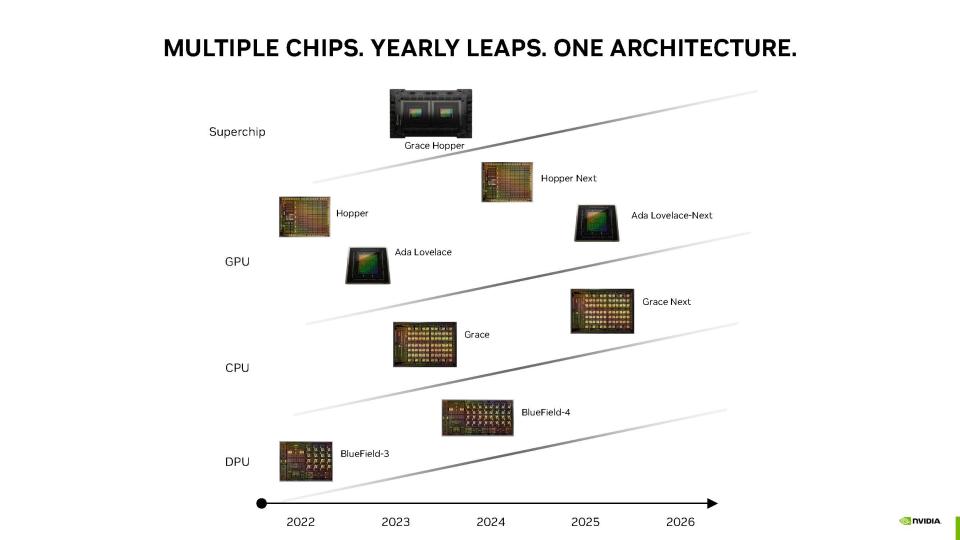Nvidia Ada Lovelace Successor GPUs Slated for 2025 Release

As a demonstration of the Nvidia H100's (Hopper) AI training prowess, an army of only 3,584 Hopper GPUs trained a GPT-3-based model in just 11 minutes. During that press briefing, Nvidia shared an updated roadmap detailing the company's next-generation products, including the successor to the GeForce RTX 40-series Ada Lovelace GPUs, some of the best graphics cards for gaming available today.
According to the roadmap, Nvidia plans to unleash "Ada Lovelace-Next" graphics cards in 2025. Assuming the chipmaker continues with the current naming scheme, the next-generation GeForce products should hit the market as the GeForce RTX 50 series. For obvious reasons, Nvidia didn't reveal the codename for Ada Lovelace's successor. Some believe it could be Blackwell, a familiar codename from the Nvidia hack. However, we think Blackwell is likely the successor to Hopper, which Nvidia has labeled as "Hopper Next" on the roadmap.
Nvidia has typically adhered to a two-year cadence for consumer graphics cards. For instance, the chipmaker launched Pascal in 2016, Turing in 2018, Ampere in 2020, and not so long ago, Ada Lovelace in 2022. If Nvidia launches Ada Lovelace's successor in 2025, the company would be breaking the usual rhythm and pushing the cadence closer to three years, or 30 months if the chipmaker aims for an early 2025 release.

That said, Nvidia's AI business is flourishing. The recent AI trend has generated significant demand for Nvidia's GPUs, such as the latest H100 or the previous-generation A100. ByteDance has reportedly ordered $1 billion worth of Nvidia GPUs just this year. Despite the export restrictions, Nvidia has continued to grow its AI business in China, one of the world's biggest markets. The restrictions have forced Nvidia to nerf some of its best AI products and release particular SKUs like the H800 or A800 to meet the export requirements.
But let's look at it in another way. The export regulations have favored Nvidia since it means the chipmaker's customers must buy more GPUs to get the equivalent performance from the vanilla variants.
It's understandable why Nvidia may prioritize compute GPU production over gaming GPUs. A recent report claims that the chipmaker has allegedly increased the production of its compute GPU products. Nvidia isn't facing tough competition from AMD's RDNA 3 product stack, and Intel doesn't currently pose a serious threat to the GPU duopoly. In other words, Nvidia has the luxury of procrastinating a bit on the consumer side.
Nvidia recently expanded its GeForce RTX 40-series product stack to (or at least close to) the bottom of the ladder with the GeForce RTX 4060 and GeForce RTX 4060 Ti. There's the potential for a GeForce RTX 4050 as well as additional options at the top like an RTX 4080 Ti or GeForce RTX 4090 Ti. Nvidia could also offer up a Titan RTX Ada. The ongoing leaks of an Nvidia quad-slot cooler suggest that at least one of these monsters exists.
And if push ever comes to shove, Nvidia could always take a play out of its old Turing playbook and refresh Ada Lovelace, giving it the 'Super' treatment, extending its Ada lineup even further. But one thing seems clear: No one should expect a true follow-up to the Lovelace architecture anytime this year or next.

